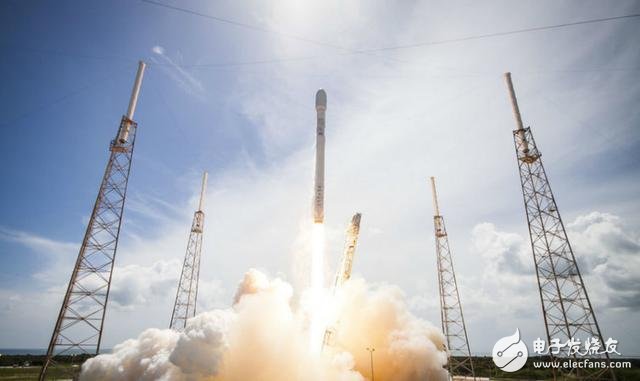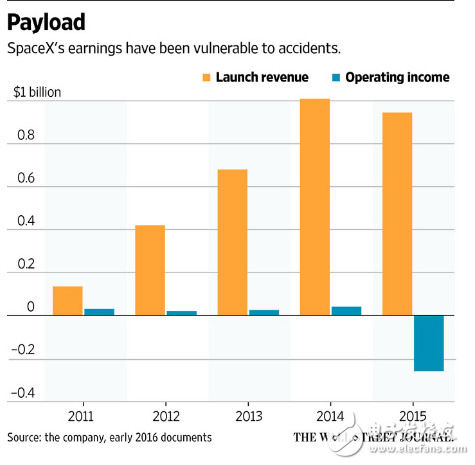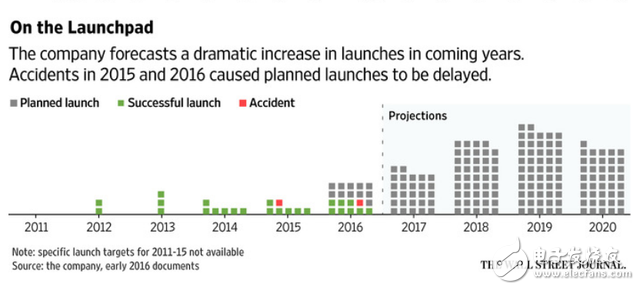The Wall Street Journal recently disclosed the financial data of Space X. The 2015 Falcon 9 explosion caused it to lose $260 million that year.
This data comes from Space X's internal financial documents. It discloses the financial status of Space X from 2011 to 2015.

In 2014, Space X ushered in significant growth. NASA outsourced the near-Earth orbit business to Space X, which brought its total revenue to $1 billion, a 47% increase from the previous year's revenue.
However, by 2015, due to the explosion of the Falcon 9 in June, it experienced significant operational losses in 2015.

Income from Space X 2011 to 2015
Affected by the explosion, Space X slowed down the rocket launch plan, which seriously affected the income of Space X.
It was originally planned to reduce the number of rockets successfully launched in 2015 to six. Its customers have also turned to Space X's competitors to launch satellites.
Last year, its two clients, Inmarsat and American Vision, turned to find its rival Arianespace launch satellite in France.
According to this internal document, Space X still had $1.3 billion in cash flow by the end of 2015, as Space X received $1 billion from investments in Alphabet and Fidelity in early 2015.
Despite this, Space X was already at a loss in the same year. As disclosed in the document, Space X was in an operating loss every quarter and had a cash flow of $15 million.
After the recurrence of the Falcon 9 in September last year, its revenue will be lower than previously expected.
This document estimates that Space X's revenue will reach $1.8 billion in 2016 and operating profit will reach $55 million.
But according to the Wall Street Journal, this expectation may be difficult to achieve. Because this estimate came from the first half of last year, when it was planned to launch 20 rockets, the reality is that it only launched 8 vehicles last year.

Number and plan of Space X launch rockets from 2011 to 2020 (Note: only the planned number after 2017, in addition to the red box indicates the number of failed launches)
In addition to the income over the past five years, this internal report also mentions revenue expectations for the next 10 years after 2015.
Satellite Internet services are considered by Space X to be an important business for revenue growth in the future.
The report predicts that Space X will benefit from satellite Internet services by 2019. By 2025, Space X expects Internet services to reach more than 40 million users and generate $30 billion in revenue.

The picture on the left shows the revenue of the Space X rocket launch service and satellite Internet service from 2011 to 2025. The picture on the right shows the operating income. (Note: Estimated from 2016 to 2025)
In 2015, Musk announced that it had announced plans for satellite Internet services and expected to invest $10 billion. In November last year, Space X submitted an application to the US Federal Communications Commission to launch 4,425 satellites to provide high-speed Internet services worldwide. This number is more than three times the number of human launching satellites. These satellites will be sent to low-earth orbit to provide users with 1G of high-speed network services per second.
Space X plans to generate revenue from this segment of the business beyond the current core rocket launch business by 2020, and will bring in revenue between $15 billion and $20 billion by 2025.
Carissa Christensen, chief consultant of consulting firm Tauri Space and Technology, said that using the satellite to provide Internet services could clearly prove the higher valuation of Space X in the rocket launch market, which can only generate $4.5 billion in revenue this year.
Function description
The socket is ordinary converter,with two output 5V2A power USB power supply at the same time,can be very convenient in use electrical appliances and recharge the equipment at the same time,such as digital products like Iphone Ipad,MP3,MP4 etc.The charge apply to full range of international AC output,no-load power consumption less than 0.3W,with short circuit,overload,over-voltage protection,can be convenient for your life and save more energy
Timer Control Time Adgustment
1.Press the power switch 1 time,the 1HOUR LED will light on.The Timer into ON mode,USB and control socket output ON .
2.Continuously press the power switch the LED light on,the Countdown mode and LED light on will cycle change from 1HR,2HR,4HR,6HR,8HR,10HR.
3.Choose you need countdown time mode,the mode LED will lighto on,start countdown until countdown time finish,the control output and USB change to OFF
4.Then the countdown is start,The Time indicate LED will from high to low auto change until Countdown finish off.
Failure analysis:
1.check whether the power supply connection is good
2.check whether the USB cable is loosen
Warning Note:
1.Use indoor and dry location ONLY
2.The load max does not exceed 15A 3600W
3.This product does not convert voltage please do not miss use DO NOT exceed the maximum loading of 3600 Watts 15A
4.Always have earth connection for safety reason
5.If in doubt please consult with a qualified electrician
USB countdown timer, USB countdown timer socket, USB timer, USB charger timer, USB timer socket
NINGBO COWELL ELECTRONICS & TECHNOLOGY CO., LTD , https://www.cowellsocket.com